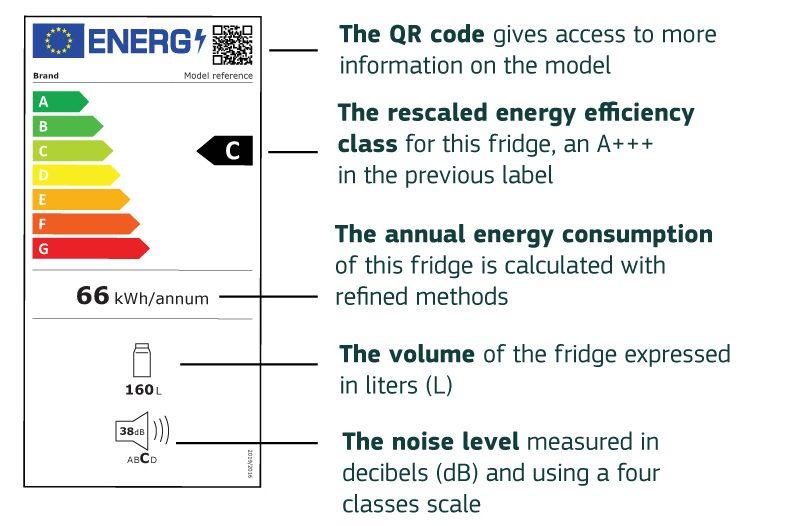Energy efficiency ratings. It seems like they’re on every product at appliance stores. But why are they there, and what do they all mean?
Why rate energy efficiency?
More than 80 countries have a standardised rating system, across over 50 products.
A study found that household appliances and lighting make up nearly 60% of Europe’s residential energy use. In addition, global energy use from household appliances is also increasing. Thus, to stop this from growing too much, consumers need energy-efficient appliances.
To drive consumers to buy energy-efficient products, labels and minimum rating standards were created. Promoting energy efficiency comes with many benefits. Some of these listed in a 2015 IEA Report include:
- Greater energy savings by reducing utility bills.
- More sustainable energy networks.
- Supporting economic and social development goals.
- Lowering greenhouse gas emissions and decreasing water use.
- Reducing indoor pollution and increasing comfort from better products. This helps increase prosperity.
Not all products need energy rating labels. Yet, it’s common for many countries to add energy labels to household appliances with high energy needs. Some of these include air conditioners, fridges, dishwashers and televisions.
Types of energy rating labels
There are two main types of energy labels: endorsement, and comparative labels.
Endorsement labels are stamps of approval. They tell customers that a product is energy efficient compared to similar items. For example, ENERGY STAR (see below) is a common example. This shows a product has met ENERGY STAR’s energy efficiency criteria.

In contrast, comparative labels give more information about a product. These are used more often than endorsement labels. Usually, they rank appliance efficiency compared to similar products, and state its energy use.
These often have two main pieces of information:
Energy efficiency ratings
In many countries such as the European Union (EU), a grade between A and G is used on labels, where A is the most efficient, and G is the least. Other countries such as Australia and New Zealand use a star-based system instead, where more stars mean more efficiency.


Annual energy usage
Most labels also include annual energy usage (usually in kWh/year or kWh/annum), measured by standardised tests. This is useful for comparing products, no matter their size. Some labels may also state their total energy use over the product’s life. With these, lower numbers often mean more efficiency.
Other information on labels
Other information can also help consumers based on their values and needs. The table below shows how they differ between countries.
Some information they provide includes:
- Efficiency ratings.
- Energy use.
- Comparisons with similar models.
- Operating costs.
- Make and model.
- Testing standards used.
- Capacity and features.
- Year of manufacture and other appliance information.

How energy ratings affect customers
A 2014 Australian survey found that 67.3% of people felt that knowing energy usage helped with making purchase decisions. This jumped to 73.1% for air conditioners. This shows that consumers often look at energy usage when buying appliances. Other studies also show that energy labels tend to draw attention towards energy information.
However, purchasers need to understand and trust the information on labels to change their buying habits. This means there’s much room for labels to improve how they share information. A study found that EU-wide energy labels, for example, were less effective than expected in getting people to buy sustainable products. One reason could be how hard it is to compare products of different sizes, as consumers can’t tell how grades are made. Improving how labels are formatted and the information shown may help with this.
Hence, it’s vital to make sure energy labels give people the information they need to make an informed purchase.
Energy standards have had some success, with today’s appliances much more energy-efficient than they were 10 years ago.
Hopefully, continued innovation will lead to super-efficient appliances in the future.
The THRIVE Project is a not-for-profit research, education, and advocacy group. Together, we seek to help everyone reduce their energy impacts and live a sustainable life. If you would like to find out more, feel free to look at our blog posts, or follow us on Instagram or Facebook and join us on our journey to THRIVEability.























